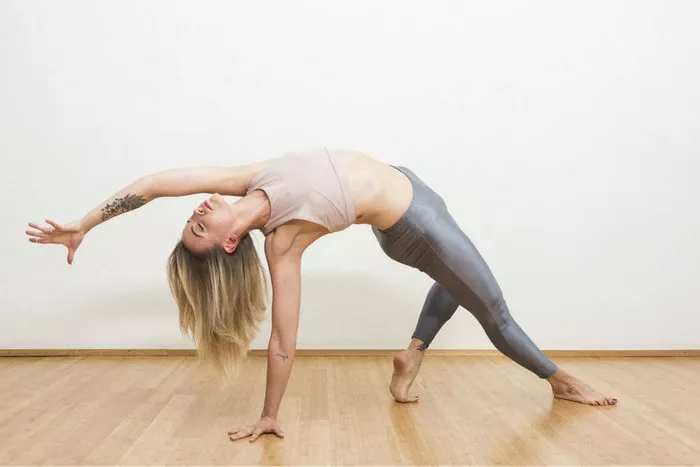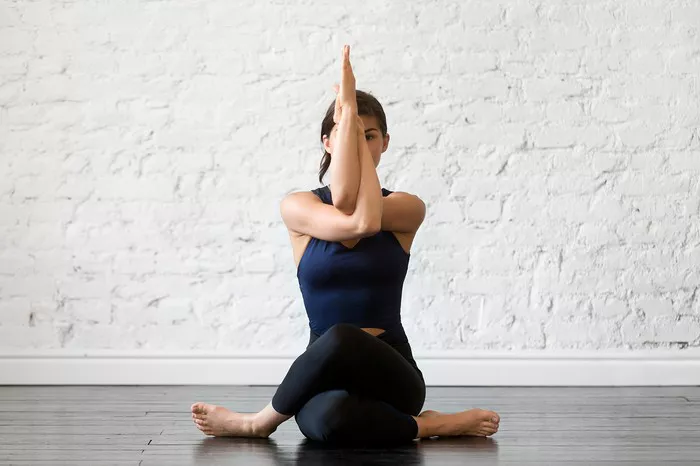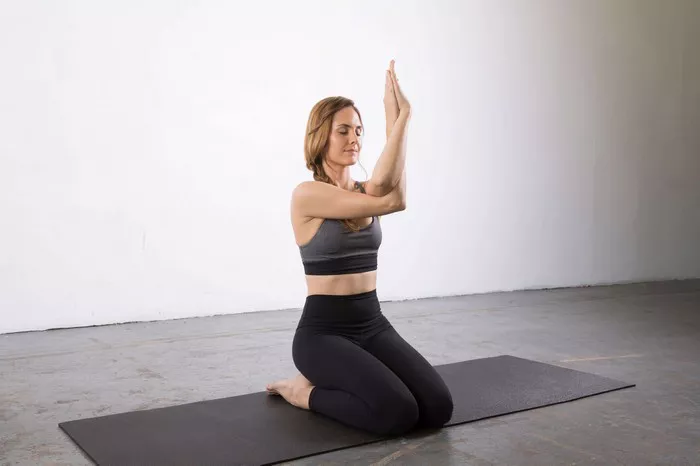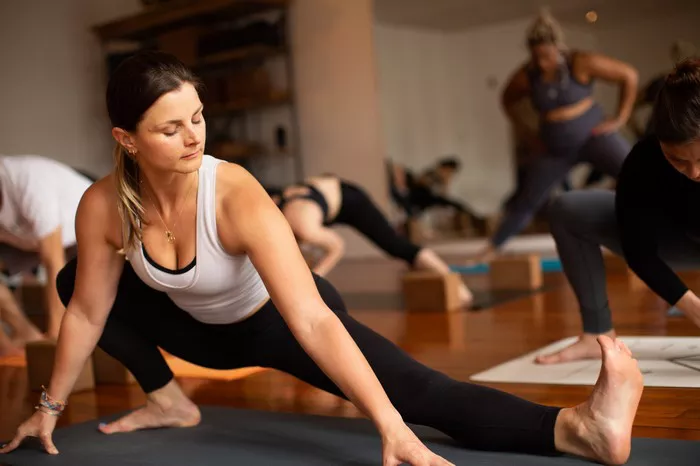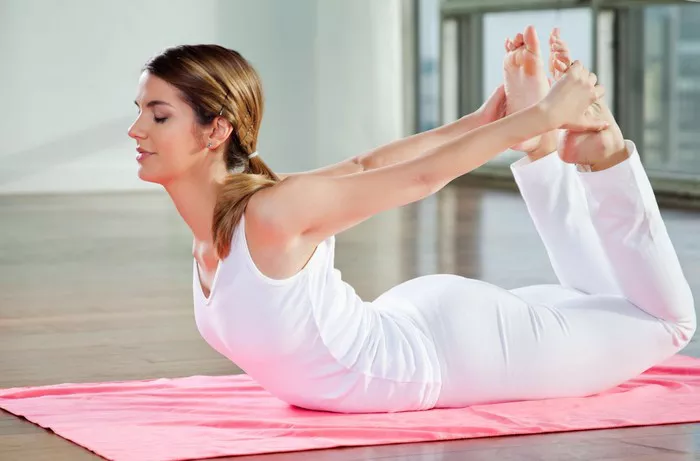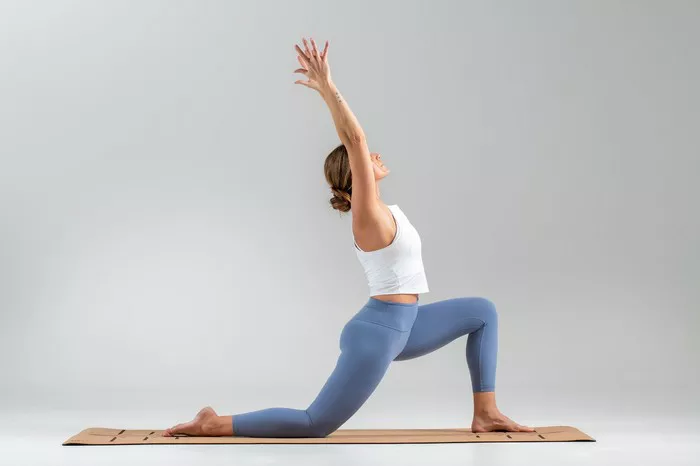Ujjayi Pranayama, often referred to as the “Ocean Breath” or “Victorious Breath,” is a foundational breathing technique in yoga. It is widely practiced in both traditional Hatha yoga and modern Vinyasa flow classes. Characterized by a soft hissing sound created at the back of the throat, Ujjayi helps regulate breath, calm the mind, and build internal heat. It is especially valuable for enhancing mental focus, promoting relaxation, and preparing the body for deeper meditation or asana practice. This ancient practice balances the sympathetic and parasympathetic nervous systems and promotes an overall sense of well-being.
Unlike other breathing techniques, Ujjayi involves a slight constriction at the back of the throat, creating audible breath control that maintains a steady rhythm. This makes it easier to sustain attention and regulate energy. When performed correctly, Ujjayi transforms ordinary breathing into a powerful tool for physical and mental discipline, making it a cornerstone of mindful yoga practice.
The Meaning and Origin of Ujjayi
The word “Ujjayi” comes from Sanskrit, where “ud” means upward or expanding and “jaya” means victory or conquest. Thus, Ujjayi is often translated as “victorious breath.” This name reflects the power of the breath to uplift the practitioner, helping them conquer distractions and internal turmoil. The technique has been mentioned in several ancient yogic texts, including the Hatha Yoga Pradipika, where it is praised for its ability to build inner heat and cleanse the body’s energy channels.
Historically, Ujjayi was used by yogis not only as a breath control technique but also as a form of meditative practice. By making the breath audible, the yogi remains anchored in the present moment, facilitating deeper states of awareness. The sound also serves as a guide, helping maintain a steady rhythm during asana or pranayama sequences.
Benefits of Ujjayi Pranayama
Ujjayi Pranayama offers numerous physiological and psychological benefits that make it a staple in many yoga traditions. Below are some of the most prominent advantages:
- Improves Respiratory Function: The practice strengthens the diaphragm and enhances lung capacity.
- Calms the Nervous System: The audible breath activates the parasympathetic nervous system, promoting relaxation and stress reduction.
- Increases Focus: The steady rhythm and sound of the breath encourage mindfulness and concentration.
- Generates Internal Heat: The technique is known for building warmth within the body, which can aid in detoxification.
- Enhances Meditation: By anchoring attention to the breath, Ujjayi makes it easier to enter meditative states.
- Balances Energy: Ujjayi breath helps regulate prana (life force energy) in the body, promoting energetic harmony.
Regular practice can also improve emotional regulation, lower blood pressure, and contribute to better sleep. It is considered safe and beneficial for most people, though it should be practiced mindfully.
Preparations Before Practicing Ujjayi
Before starting Ujjayi Pranayama, it is essential to create the right physical and mental environment. Proper preparation ensures a more effective and safe practice. Here are some key preparatory steps:
- Choose a Quiet Space: A peaceful environment minimizes distractions and enhances your ability to focus on your breath.
- Sit Comfortably: Adopt a seated position such as Sukhasana (Easy Pose) or Padmasana (Lotus Pose), keeping your spine erect and shoulders relaxed.
- Loosen Tight Clothing: Wear loose, comfortable clothes that allow for free movement of the diaphragm and lungs.
- Time Your Practice: Early morning is considered ideal for pranayama, but it can be done at any time when the stomach is relatively empty.
- Mental Readiness: Begin with a few moments of silence or simple deep breathing to center yourself and prepare mentally.
Once these elements are in place, you are ready to begin your Ujjayi practice with attention and care.
Step-by-Step Guide to Practicing Ujjayi Pranayama
Step 1: Assume a Comfortable Seated Posture
Sit in a meditative posture such as Sukhasana (Easy Pose), Padmasana (Lotus Pose), or Vajrasana (Thunderbolt Pose). Keep your spine straight and your shoulders relaxed. Place your hands on your knees in a mudra, such as Chin Mudra or Jnana Mudra, with palms facing upward.
Ensure that your body is stable and that you can maintain this position for several minutes without discomfort. Close your eyes gently and begin to turn your awareness inward. This initial stillness is key to preparing both the body and mind for pranayama.
Step 2: Begin Observing Your Natural Breath
Spend a minute or two simply observing your breath without trying to change it. Notice the rhythm, the temperature of the inhale and exhale, and the movement of your chest and abdomen. This observation phase helps establish a mindful connection with your breath, setting the stage for conscious control.
Try to let go of distractions and become fully present with each inhalation and exhalation. This phase also helps you identify any tension or irregularity in your breathing pattern.
Step 3: Engage the Throat Slightly
Gently constrict the back of your throat as if you are about to whisper or fog up a mirror, but with your mouth closed. This creates a soft, ocean-like sound during both inhalation and exhalation. This sound is the hallmark of Ujjayi breathing and should be audible but not harsh.
If you’re practicing for the first time, try breathing through your mouth while making a “ha” sound. Once you understand the feeling in your throat, close your mouth and try to replicate that sound through your nose.
Step 4: Inhale Slowly and Deeply Through the Nose
Take a slow, deep inhalation through your nose, continuing the slight constriction at the back of the throat. The breath should be steady and smooth, filling the lungs from the bottom up. Feel your abdomen expand, followed by your rib cage and chest.
Ensure that the breath is not forceful. The goal is to achieve depth and control, not to take in as much air as possible. Maintain a consistent sound and pace.
Step 5: Exhale Slowly Through the Nose
Maintain the throat constriction and exhale slowly and evenly through your nose. The exhalation should last as long or slightly longer than the inhalation. Focus on releasing all the air gradually, keeping the sound consistent and smooth.
Use this phase to relax any residual tension in your body. The controlled exhalation helps calm the nervous system and deepen your state of awareness.
Step 6: Establish a Rhythmic Pattern
Continue the cycle of slow, controlled inhalations and exhalations, maintaining the same throat constriction and sound throughout. Try to match the length of your inhales and exhales initially, then gradually extend the exhalation slightly to promote greater relaxation.
A common beginner rhythm is a 1:1 ratio (e.g., inhale for 4 seconds, exhale for 4 seconds), which can later progress to 1:2 (e.g., inhale for 4 seconds, exhale for 8 seconds) as your control improves.
Step 7: Maintain Focus and Duration
Aim to practice for 5–10 minutes initially, increasing gradually to 15–20 minutes as you become more comfortable. Maintain a steady rhythm and focus throughout the practice. If your mind wanders, gently bring your attention back to the sound of your breath.
Don’t rush. Consistency and patience are key to gaining the full benefits of Ujjayi Pranayama.
Common Mistakes to Avoid
Even though Ujjayi is a simple technique, beginners may fall into some common pitfalls. Here are several mistakes to be mindful of:
- Over-constricting the Throat: This can make the breath sound harsh or strained rather than smooth and soothing.
- Breathing Too Rapidly: Fast breathing undermines the calming effects and can lead to lightheadedness.
- Holding Tension: Avoid clenching your jaw, tightening your shoulders, or furrowing your brow.
- Inconsistency in Sound: The sound of the breath should be even and sustained throughout both inhalation and exhalation.
- Mouth Breathing: Ujjayi should be performed exclusively through the nose once you’re familiar with the throat position.
Regular self-awareness and correction can help eliminate these errors and enhance the quality of your practice.
When and How Often to Practice
The best time to practice Ujjayi Pranayama is in the early morning when the mind is quiet and the body is fresh. Practicing before meditation or yoga asanas can greatly enhance those sessions. Ideally, begin with 5–10 minutes per day and gradually increase the duration as you grow more accustomed.
You can also practice Ujjayi during physical yoga asana sessions, particularly in Vinyasa or Power Yoga, where synchronizing breath with movement is essential. However, during sitting pranayama sessions, it’s important to remain still and focused on the breath alone.
Frequency Guidelines:
- Beginners: 5–10 minutes, 3–4 days per week
- Intermediate: 10–15 minutes, 5–6 days per week
- Advanced: 15–20 minutes, daily
Consistency is more important than duration, especially for beginners.
Contraindications and Precautions
While Ujjayi is generally safe, there are certain conditions where caution is required:
- Respiratory Issues: People with severe asthma or chronic bronchitis should consult a healthcare provider before starting.
- Low Blood Pressure: Extended exhalation can sometimes lower blood pressure further.
- Vertigo or Dizziness: If you feel lightheaded during practice, stop immediately and resume normal breathing.
- Pregnancy: Always consult a qualified instructor or healthcare provider, especially in later trimesters.
Always listen to your body. If discomfort arises, pause the practice and seek guidance from a qualified yoga teacher.
Integrating Ujjayi Into Your Yoga Practice
Ujjayi Pranayama can be practiced as a standalone breathing exercise or integrated into a full yoga session. In dynamic styles like Ashtanga and Vinyasa, Ujjayi is used throughout the class to coordinate breath with movement. In slower, meditative practices, it may be used during seated meditation or restorative poses.
Ways to Integrate Ujjayi:
- During Warm-Up: Use Ujjayi to prepare mentally and physically before asanas.
- In Sun Salutations: Synchronize each inhale and exhale with transitions and poses.
- In Holding Poses: Maintain Ujjayi breath to deepen stretches and stay focused.
- During Cool Down: Use it to relax and release tension as the body winds down.
This integration allows you to stay centered and mindful, even during physically demanding sequences.
Conclusion
Ujjayi Pranayama is a deeply transformative practice that enhances both physical and mental well-being. Its subtle yet powerful technique can be learned by anyone willing to practice with attention and care. By engaging the throat, slowing the breath, and focusing on its rhythm and sound, you can access deeper levels of awareness, tranquility, and vitality.
Whether you are a yoga beginner or an experienced practitioner, incorporating Ujjayi into your daily routine offers a pathway to a more mindful and harmonious life. The key is consistent practice, mindful awareness, and a sincere intention to grow. As you explore this ancient technique, let your breath become your guide to inner peace.
Related Topics:


